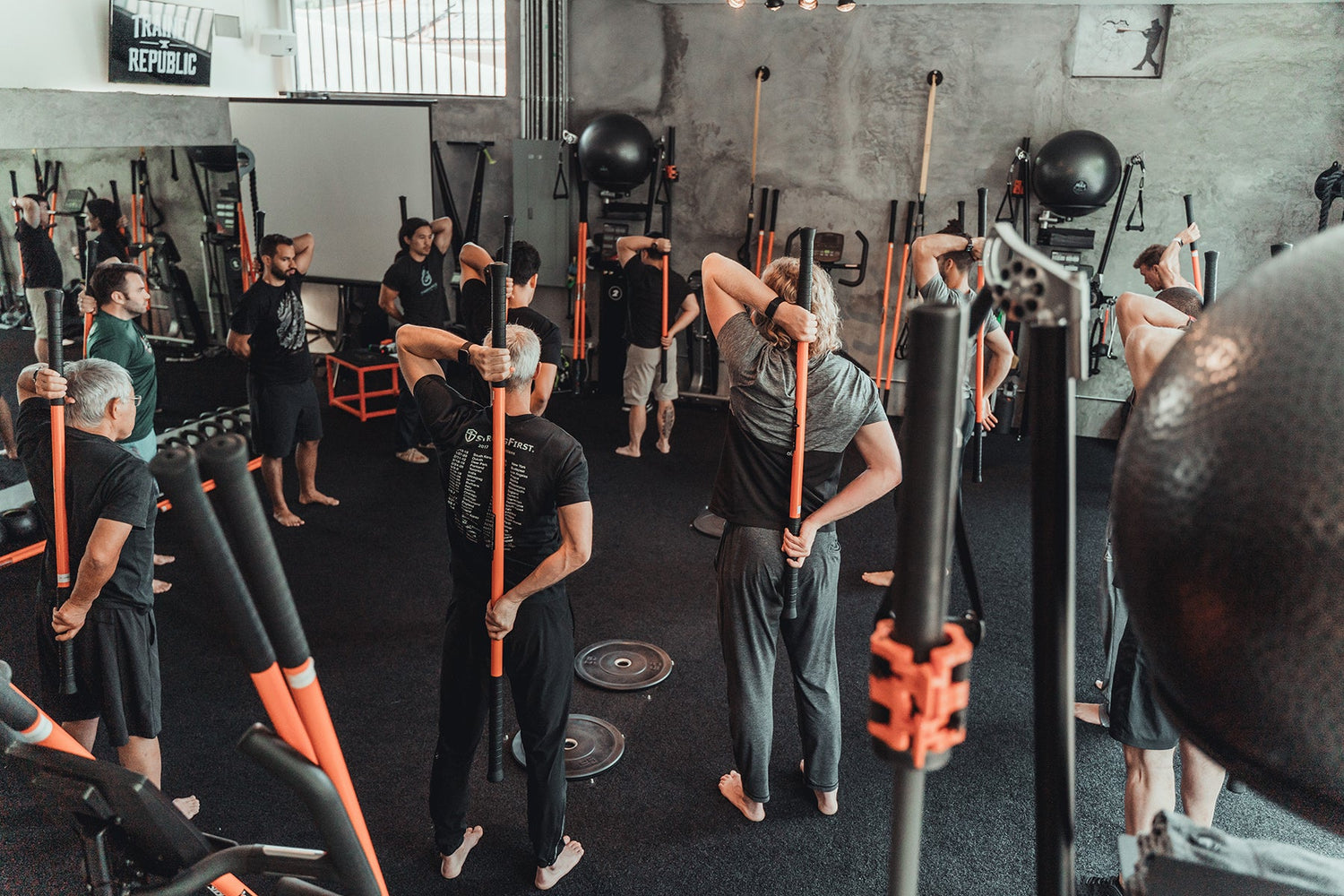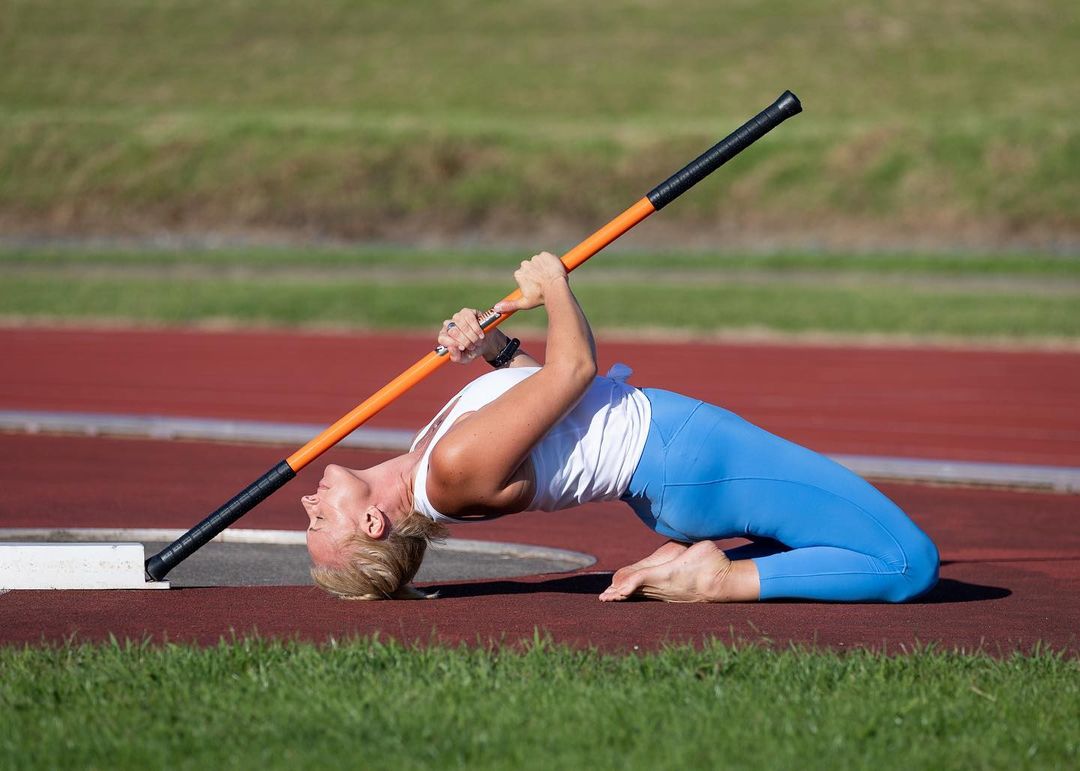Who is Stick Mobility For?
This is a question that we are often asked by clients, trainers, and coaches. The answer is simply yes, for the most part (we'll address the exceptions later). We believe we have created a system and tool that can be accessed by the vast majority of the population because it can be adjusted to each individual user. We wanted something that is not intimidating to use and doesn't exclude people from experiencing its benefits.
Origins
When Stick Mobility was starting out, we held group classes on Saturday mornings, and the turnout was incredible. It was inspiring to see a blend of all ages in the group. You would often find highly skilled college or high school athletes working alongside 80-year-old grandmothers or middle-aged computer engineers. How was this possible? In our system, each movement can be adjusted to match the ability of each individual. As one of us would be teaching, the other would walk around and make adjustments to body position, lever length, range of motion, or intensity level as needed for each person. This allows individuals to achieve the desired results and adaptations.
Progressions/Regressions
Let's discuss a couple of examples, starting with our standing hip drills. Here, we use the Training Sticks to activate the core structure vertically and add stability when we ask the user to lift one foot off the floor to perform various hip drills (internal/external rotation, Vitruvian Man, Captain Morgan, etc.). Typically, highly skilled individuals have no trouble maintaining an upright posture. However, what if someone lacks proper foot-to-core integration and struggles to maintain a stable upright posture or experiences foot pain? In such cases, we can have that person perform the same movements from a seated position on a bench until they are ready to stand and perform the drills.
The Slap Shot is one of our favorite movements for improving thoracic rotation. In this movement, the user places the stick across the low back, parallel to the floor. They then hinge at the hips and attempt to bring one end of the stick to the floor and across their midline without compensating with hip shifts due to thoracic restriction. Now, let's say the user has limited mobility and cannot touch the floor with one end of the Training Stick. In order to create a stable point of contact and maximize leverage to improve rotational ability in the thoracic spine, we have two options: 1) offset the lever (lengthen the stick on the side attempting to reach the floor) or 2) use an elevated platform (plyo-box, bench, yoga block, etc.) to bring the floor up to the user, allowing them to rest the end of the Training Stick on that level.
Movement Made Better
Please don't fall into the trap of thinking that reduced mobility is strictly an age-related issue. While there is truth to this, we also know that young people are equally susceptible. Your body adapts not only to the stimulus you give it but also to the stimulus you take away. Consistency in daily movement practices is vital for longevity and quality of life. Lack of movement and prolonged periods in any posture can have adverse effects on your movement quality and ability to move well. Children, teenagers, and young adults can benefit from using the Training Sticks to address inhibited areas and postures. Why wait 30-40 years to finally take mobility seriously? It will only become harder to overcome and reverse restrictions as they become more deeply ingrained in your system. Using the Training Sticks and emphasizing the importance of maintaining tissue and joint health is something we want to instill in the younger demographic.
Lastly, I've had the privilege of working with clients who are wheelchair-bound, and they absolutely love using the Training Sticks to build strength and maintain overall health. Individuals in wheelchairs often depend on someone being present to assist them in the gym. Now, they can utilize isometrics with the Training Sticks to enhance their strength and keep their shoulders supple and fluid. Since most wheelchairs are not motorized, they place significant demand on the shoulders and arm muscles. Stick Mobility provides them with independence and empowerment. I feel incredibly humbled and grateful to be able to help a demographic that has been completely ignored by the fitness industry. According to the National Institute of Health, there are nearly 3 million people who are wheelchair-dependent, and this number is only increasing.
While there are exceptions for individuals who cannot use the Training Sticks, such as those with paraplegia or severe neurological conditions, we have been able to achieve widespread accessibility. We are proud and grateful to have already helped thousands of people, and we look forward to assisting thousands more.


